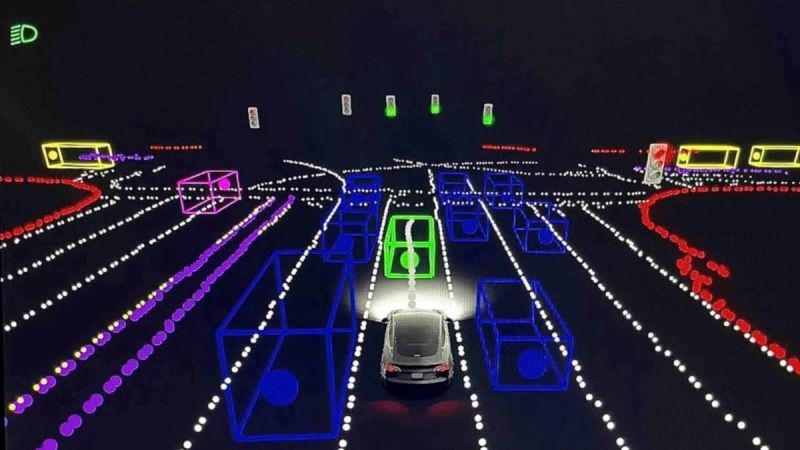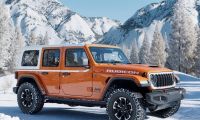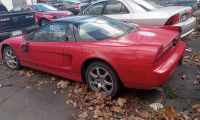For the past few months, Tesla has granted a select group of Full Self Driving option buyers access to the company’s newest FSD software. The new software’s architecture is, according to Musk, a “quantum leap” on the current Autopilot available for most of the public.
The new software generally referred to as “FSD beta” enables several new exciting capabilities. Some of the new functionalities unlocked by the software are driving on surface streets, unprotected left turns, full autonomous traffic light recognition and response, and many more. Tesla ultimately plans the neural nets underpinning the FSD beta to lead to level 5 autonomy.
Musk last week had said Tesla will be adding a download button so that more people can participate in the FSD beta program. And now on Twitter Musk says participants in the program have doubled from 1000 to approximately 2000. However, as new individuals gain access, some “drivers who did not pay sufficient attention” have lost their spot in Tesla’s FSD beta program too.
Related News: Tesla Cyber Truck Could Power Your RV or House
Given the importance of the FSD program and how much negative attention an accident would bring it makes sense Tesla will remove drivers who aren’t using the capabilities properly. However, having said that Musk says as of now there haven’t been any accidents recorded driving on the software.
Elon has also provided more clarification on the release date of Tesla’s next significant upgrade to the FSD beta software. This upgrade known as version 9 will be coming sometime in April. According to Musk, version 9 will transition the FSD beta software to relying solely on vision. Surprisingly this means Tesla will be foregoing the use of radars for self-driving.
FSD Beta has now been expanded to ~2000 owners & we’ve also revoked beta where drivers did not pay sufficient attention to the road. No accidents to date.
Next significant release will be in April. Going with pure vision — not even using radar. This is the way to real-world AI.— Elon Musk (@elonmusk) March 12, 2021
Currently, all Tesla vehicles are equipped with 8 surround cameras and a front-facing radar. Tesla uses radar information to check the accuracy of the vision input interpretation in some tricky situations like when driving under an overpass. And it seems with the new release Tesla is confident enough with their vision neural nets they will no longer need radar.
Unlike the rest of the “self-driving industry” for a long time, Elon Musk has refused to put Lidar on Tesla vehicles. When discussing Lidar, Musk has said: “Lidar is a crutch” and in order to solve level 5 autonomy, one has to solve vision. And apparently, as Tesla gets closer to true full self-driving it also means rendered radar unnecessary.

Related News: Tesla Increases Prices On It’s Vehicles By $500 Up To $10,000
However, there might still be a place for radar in Tesla’s self-driving suit. One cool and potentially life-saving use of radar is tracking multiple vehicles which aren’t visible to the cameras or to drivers’ eyes.
If a Tesla is for example following a large van the movement of the vehicles passed the van might be obstructed. However, using radar Tesla bounces signals under the van and measure the speed of 2 to 3 vehicles in front even though they are not visible to the cameras.
This allows Tesla vehicles to perform seemingly superhuman feats such as breaking before an accident occurs. Following the rollout of this feature, countless videos have come out on youtube where Tesla vehicles beep and break seemingly for no reason, and a second later the car in front slams into the one ahead of it.
As of now, there are only bits of information known about Tesla’s FSD beta version 9. However, the move to a pure vision system seems to be a result of, Tesla finally enabling all 8 cameras to drive. We will keep you posted when more information comes out about Tesla’s next FSD beta release.
So what do you think? Is Tesla right for removing individuals from the FSD beta tester program for not paying full attention? And are you excited that Tesla has doubled access to the FSD beta software? Have any of you been granted access to the expanded tester list? Let me know your thoughts down in the comments below.
For more information check out: Delivery Estimates For New Model S & X Increase Likely Due To High Demand And Production Woes Also, see Another Tesla Hits Another Semi From the Side - This Time It Looks Like a Model Y
Tinsae Aregay has been following Tesla and The evolution of the EV space on a daily basis for several years. He covers everything about Tesla from the cars to Elon Musk, the energy business, and autonomy. Follow Tinsae on Twitter at @TinsaeAregay for daily Tesla news.












Comments
I hope that they are not
Permalink
I hope that they are not seriously planning to go all video for tracking. Video has some specific shortcomings, and this is NOT the place for cost cutting. I can understand going visual-only for testing, to focus on that area of FSD to get the software dialed in. But from what I've seen, multiple sensors overlap strengths, and support higher accuracy under all conditions.
According to Musk the driving
Permalink
In reply to I hope that they are not by DeanMcManis (not verified)
According to Musk the driving world was designed for human beings which rely only on vision (our eyes) and in order to have full self driving the AI has to learn to drive as a person. I don't think it's meant to be a cost cutting measure
of course it's a question of
Permalink
In reply to According to Musk the driving by Tinsae Aregay
of course it's a question of cost, and musk brands it asa futuristic and audacious move.
Sorry, but that is terrible
Permalink
Sorry, but that is terrible reasoning. The key advantage to having computers drive cars is not purely to mimic humans. It is to utilize advanced technologies that are better than humans in all aspects. To "see" and discern objects faster and more accurately, interpret the environment and conditions more completely, predict actions and reactions more accurately and quickly, make the best decisions, and act quickly and correctly. As with any programming, the accuracy of information being input is critical to every process and action that follows. There are many shortcomings to having only visual information, which is why ALL of the best performing, self driving vehicles use multiple technologies and sensors. Automotive drivers and passengers automatically assume that self driving vehicles will operate at 100% accuracy, even though that is never actually possible. But if you remove the other sensors that can provide accurate information where video fails, overall accuracy drops. And with automobiles, that deficiency could cost lives. I totally support Tesla's Autopilot/FSD/Dojo work, but I cannot see the prospect of removing sensors as beneficial. Because in some situations, (like safety) simpler is not always better.
Definitely having a back up
Permalink
In reply to Sorry, but that is terrible by DeanMcManis (not verified)
Definitely having a back up is a good idea. However, there are a lot of issues with radar too. Musk likes to give an example of a soda can. If the bottom is oriented towards the the signal source just the shape will amplify it and make the object seem much larger than it is. And that's just one of many issues
Much of what you say is true,
Permalink
In reply to Sorry, but that is terrible by DeanMcManis (not verified)
Much of what you say is true, but in fact, the pillar cameras (both) and the front fender cameras on my my model S "fog up" with condensation in wet and humid weather. Tesla says this is "NORMAL" and can't or won't fix it. The bit of redundancy added by the radar seems highly desirable and along with that even more vision redundancy. PLUS, the fogging up problem of the vision cameras really MUST be fixed for safety. And I have a 2020 model S with FSD.
Much of what you say is true,
Permalink
In reply to Sorry, but that is terrible by DeanMcManis (not verified)
Much of what you say is true, but in fact, the pillar cameras (both) and the front fender cameras on my my model S "fog up" with condensation in wet and humid weather. Tesla says this is "NORMAL" and can't or won't fix it. The bit of redundancy added by the radar seems highly desirable and along with that even more vision redundancy. PLUS, the fogging up problem of the vision cameras really MUST be fixed for safety. And I have a 2020 model S with FSD.